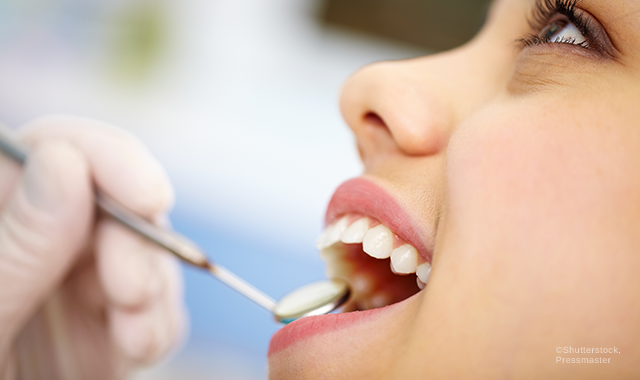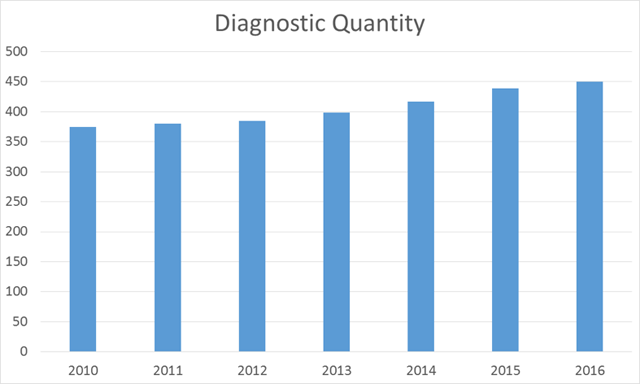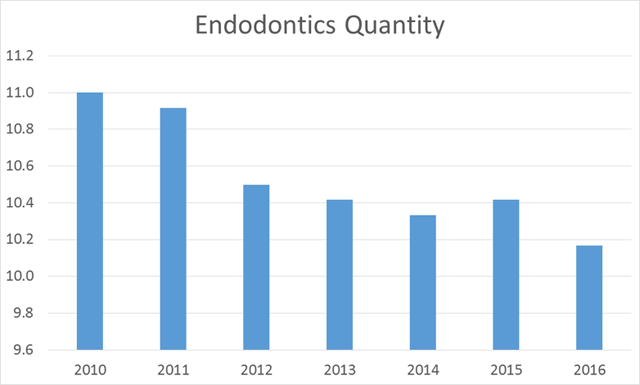Number of overall and endodontics diagnoses per practice
Understanding the number of diagnoses in the dental practice is key to understanding the state of oral health and the long term effects of receiving oral diagnoses and interventions.

Ensuring healthy mouths in the community is a dentist’s mission, however there are many barriers between dentists and this goal. Patient oral health and hygiene awareness, ability to make appointments, ability to pay and good communication of treatment options are some of the few roadblocks that patients and dentists face every day.
This paper looks at diagnostic quantity per practice and how this is affecting oral health overall. Diagnostic quantity refers to the number of diagnosed codes, CPT codes 111 through 999, reported in a practice each month. Understanding the number of diagnoses in the dental practice is key to understanding the state of oral health and the long-term effects of receiving oral diagnoses and interventions.
Sikka Software collects secure data from thousands of opt-in dental practices across the nation. The data is HIPAA and HITECH compliant and is free of any patient or practice identifying information. Data is collected to with the goal of providing the dental industry and practitioners the information required to benchmark practice performance and plan for managing patient flow and growth. More information can be found here.
More from the author: The latest fee data for 18 popular procedure codes
Diagnostic quantity
Diagnostic quantity data is from 2016 is through the month of June. Since 2010, diagnoses in the practice have increased by 17 percent. In 2010, practices made an average of 374 diagnoses each month, but by 2016 they made an average of 450.
Based on Sikka software’s previous article on new patients, found here, dentists are treating a significantly higher number of new and returning patients each month, representing economic recovery from the Great Recession. Therefore, this increase in diagnostic quantity is likely caused by an increase in patients being seen by the practice, not by an increase in diagnoses per patient. Additionally, if patients did not have good dental care during the Great Recession due to lack of dental benefits or financial resources, they may have undiagnosed oral problems that are now being identified in the practice. The combination of an increased number of patients being seen by the practice and more patients returning after an extended absence is likely driving this 17 percent increase.

Continue to page two for more...
Endodontics quantity
In contrast to the increase in diagnostics quantity, the number of endodontics cases seen by practices is falling off. Practices saw an average of 11 endodontics cases a month in 2010, but by 2016 the average had dropped to 10.2 cases each month, a total of 7.5 percent. This may be the result of the increase in diagnoses where patients are being diagnosed earlier and therefore require less invasive treatment; a win for both dentists and patients.

More from the author: Exploring average patient cost per practice
Conclusion
Diagnostic quantity is an indicator that patients are receiving the diagnoses they need to start them on the path to appropriate treatment options. Although, in an ideal world, preventative care would be causing a significant decline in necessary diagnostic procedures, effects of lack of patient care during the Great Recession are still being felt.
However, the drop in endodontics quantity in the face of more new patients, patient visits and diagnoses is a positive sign that patients are receiving the care they need prior to requiring the expensive intervention of a root canal. Overall, this points to an economic recovery in dentistry and a brighter future for patients’ oral health.
Track national and practice trends using practice mobilizer, the free and HIPAA compliant app for iOS and Android. The app includes key performance indicators, the daily schedule and two-way patient communication tools. Find out more here or download the app in the Google Play or Apple app store.
Data analysis for this study was done by Nilesh Malpeddi.